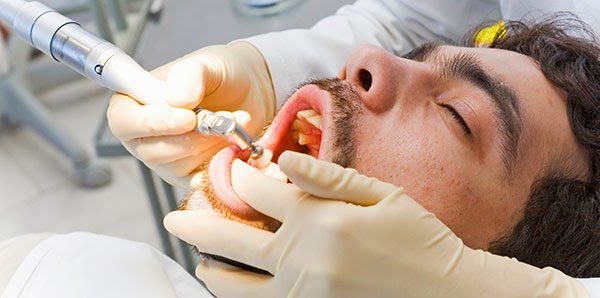We use tooth-colored fillings to restore our patients teeth and highly recommend them. Many of our patients don’t understand why a filling is necessary in the first place so we get a lot of questions about it. Contrary to popular belief, this is not an optional dental treatment but necessary for restoring the appearance and, more importantly, the functionality of a tooth.
When you eat throughout the day, sugar and bacteria are placed on your teeth and gums. When you brush and floss, most of it is removed. However, bacteria will often remain in the mouth, trapped in harder to reach places. The bacteria can then create acid which will start to attack your teeth. As it does, the tooth starts to decay or die. How large of an area that experiences tooth decay will depend on how long you go in between teeth cleanings. By having your teeth cleaned twice a year, we can catch and treat it right away.
In order to treat a cavity, the decayed portion of the tooth is removed. This will leave a small or large indent or hole in your tooth. You cannot live like that because you would experience discomfort and irritation every time that you bit down. Instead, the tooth must be restored. In order to do so, we will use tooth-colored fillings. In this situation, once the decayed portion is removed the tooth needs to be cleaned. Once done, a tooth-colored ceramic material will be applied to your tooth and shaped into place. A dental light will then be used to cause the material to harden. Once done, you will have a durable filling that makes it possible to use your tooth like normal again.
In our dental office, we prefer to use tooth-colored fillings because of how natural they look. The results are just as effective as traditional amalgam but when you smile, no one will see a mouth full of metal. In fact, these fillings blend in so well that it is nearly impossible to tell which tooth ever had a cavity to begin with. Most of our patients even forget which of their teeth were worked on. This speaks volumes when you compare it to a smile of someone who has had a lot of amalgam fillings.
If you have a mouth full of metal currently, we can help by removing your old fillings and giving you new ones. This procedure needs to be completed anyway since fillings are not meant to last forever. Replacing them early simply helps to accomplish a cosmetic or appearance goal while addressing a future health need. Remember, that fillings are an essential part of restoring the tooth structure and keeping your natural teeth in place. If you go too long without dental care, the original space that you had the filling in may expand, creating the need for a larger filling. Regular dental checkups can prevent this from happening or at least identifying if it has so that you can receive an updated filling to protect your tooth.


